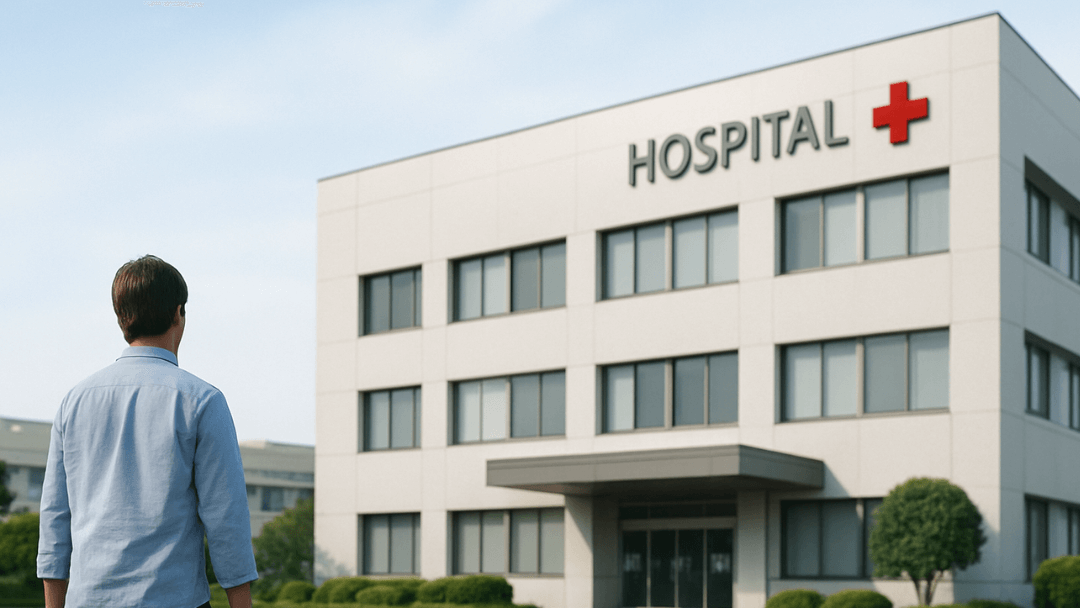When You Need to Visit a Hospital in Japan
When you suddenly become ill or get injured and need to visit a hospital, it can be especially confusing if you are not familiar with Japan’s hospitals or healthcare system. In Japan, appointments and certain items are often required when seeking medical care, so it is important to be aware and prepare in advance.
This article provides a checklist of things you should generally check before visiting a hospital in Japan.
I recommend reading it at least once to be prepared for unexpected situations in daily life.
– Recommended Reading –
In Urgent Cases: Go to the Hospital Quickly or Call 119

1. In urgent cases, visit a hospital as quickly as possible
When symptoms suddenly worsen or you get injured, it is important not to delay and to go to the hospital right away. The sooner you receive treatment, the better it is for preventing infection and promoting recovery.
In Japan, many hospitals operate on a reservation system, but in urgent situations, it is more important to seek medical care immediately rather than waiting for an appointment.
2. In an emergency, call 119
In Japan, dialing 119 connects you to both ambulance and fire services, and it is available nationwide. Ambulance transportation is free of charge, so there is no financial burden. However, it should only be used for true emergencies, as unnecessary calls may delay help for those in critical need.
3. What to Tell When Calling an Ambulance
When you dial 119, it is important to clearly explain the situation. The main information you should provide includes:
・The type of accident or symptoms (e.g., traffic accident, severe bleeding, difficulty breathing)
・The patient’s condition and level of consciousness
・Your current location (address, building name, or a nearby landmark)
These three points are the most important to communicate quickly and accurately.
In some areas, interpretation services in English and other languages are available for foreigners, so you may request them if necessary.
Checklist for a Regular Hospital Visit in Japan

1. Search for hospitals and make a reservation in advance
Without a reservation, you might face long waits or be turned away if the hospital is fully booked. Most hospitals in Japan offer online booking through their websites or medical apps, so it’s best to check in advance and secure an appointment. You can easily find hospitals using Google Maps or by searching online.
2. Bring your My Number Card (and present it again if the month changes)
Japan is phasing out traditional health insurance cards and integrating the system with the My Number Card. Be sure to bring your My Number Card to every hospital visit.
Even for follow-up appointments, if your visit is in a new month, you may be asked to present the card again. Some hospitals may also request your residence card as ID if you are a foreign resident.
3. Arrive a bit earlier for your first visit
If it’s your first time at a hospital, you’ll need to fill out some forms (such as your medical history or personal information). Arriving 10–15 minutes early will ensure you have enough time.
4. For follow-up visits, bring your patient card
If you have visited the hospital before, you should already have a patient card. Even if you forget to bring it on the day of your appointment, you may still be able to receive treatment if you have a reservation. However, to avoid any issues, it is best to always bring your patient card with you.
5. Don’t forget cash
In Japan, there are still some hospitals that only accept cash payments. If you are unsure about the payment method, check with the hospital in advance, or bring around 10,000 yen in cash to be safe.
6. Bring a mask with you
Most hospitals in Japan still recommend or require wearing a mask. If you don’t have one, you may be asked to buy it at the hospital.
7. Call the hospital if you have a fever of 37°C or higher
If you have a high fever on the day of your visit, you may not be allowed to enter.
Be sure to contact the hospital in advance and follow their instructions.
– Recommended Reading –




Comments